Note: A scheduling error resulted in last week’s speaker, Don Shoecraft, having to produce Spinnings for that meeting. This set up an ‘I/he’ problem the Spinnings editor, stubborn as he/I is/am, has been unable to resolve after furious argument, neither side having advanced a solution beyond confusion. So here’s his/my version of the presentation, which only scratches the surface of the/the presentation. I/he hope/hopes you/they enjoy it.
SPEAKER
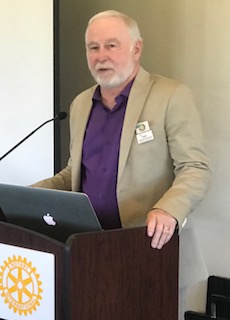 Don Shoecraft
Don ShoecraftRotarian
Past-president
Author of Wings of the Phoenix, the History of San Francisco International Airport
I wrote Wings of the Phoenix under an agreement with San Francisco International Airport; the last history was done in 1954 to commemorate the opening of the first International Terminal and airport public information officer Ron Wilson proposed a new history to mark the millennium.
We didn't make the Jan. 1, 2000 deadline but we did produce it, after 6 years, in time for the 2001 opening of the newest International Terminal.
The work was done before Internet; it required tracking down sources, visiting numerous collections, lots of reading and even perusing telephone books.
The effort was to discover the who, what and why of the airport's founding as Mills Field in 1927, something never done before.
San Francisco played a huge role in the history of aviation, going back to the late 1800s, and aviation played a critical role in San Francisco's history.
As the phoenix reference indicates, aviation even played a role in San Francisco's recovery from the earthquake and fire of 1906.
BONUS CONTENT
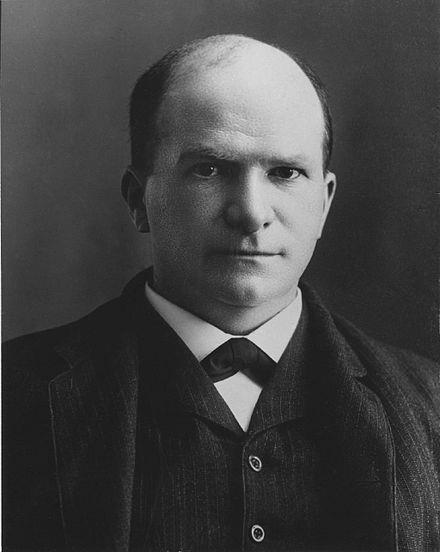 John Montgomery was 11 years old when he begged his father to see the flight of the Avitor Hermes, Jr. at Shell Mount Park in Millbrae. The Avitor, a hydrogen bag, was the first heavier-than-air machine that flew under its own power. It’s last flight was July 4, 1869, when Montgomery was among the 100 spectators. It later burned.
John Montgomery was 11 years old when he begged his father to see the flight of the Avitor Hermes, Jr. at Shell Mount Park in Millbrae. The Avitor, a hydrogen bag, was the first heavier-than-air machine that flew under its own power. It’s last flight was July 4, 1869, when Montgomery was among the 100 spectators. It later burned.
John Montgomery, a brilliant student of mathematics, physics, astronomy and geology at Santa Clara College, did his own experiments on wing designs and glider construction in the 1880s and brought his expertise to a new organization that formed in the wake of the Wright brothers' flights in 1903. This group, the Pacific Aero Club of San Francisco, held the license and therefore was primary sponsor of the third 'aviation meet' ever held in the world — at Tanforan racetrack in San Bruno in January of 1910.
The Tanforan meet featured the most famous flyer of the time, Louis Paulhan, an attraction designed to draw huge crowds to demonstrate to the federal government that San Francisco should be awarded the 1915 Panama Pacific Exposition.
BONUS CONTENT
The Wright brothers sued all other aviators in 1909 over myriad aviation ‘patents’ such as control surfaces and wing designs. The suit kept the Wrights out of the first aviation meet in the U.S., at Dominguez Hills in Los Angeles in January 1910. Montgomery accused them of ‘greed’ and contested their wing patents. Ultimately, he lost when the Wrights argued that he didn’t have witnesses to verify when he flew his glider designs. At the time Montgomery tested his theories, people trying to fly were considered crazy or idiotic, so he hid his experiments on his parents San Diego farm.
Only the Frenchman Louis Paulhan agreed to perform at Tanforan the week after LA.
Tanforan's track and grandstands hosted as many as 20,000 spectators a day over several days, proof to the government that San Francisco could generate the patronage to support a massive expo worth, to the city, the equivalent of $1.2 billion in construction and reconstruction funding.
Prominent in the local fundraising effort was James 'Sunny Jim' Rolph who, as president of the San Francisco Merchants Exchange in 1909, drummed up the equivalent of $11 million in local support for San Francisco’s Panama Pacific Expo bid, and who, on May 7, 1927, was Mayor Sunny Jim Rolph, the man at the microphone dedicating the city's first airport, called Mills Field.
President Taft awarded the expo to San Francisco in 1911, releasing the equivalent of more than a billion dollars in federal funds, funds that would change the international perception that San Francisco would never recover from the devastation of the earthquake and fire. International publicity would do just that.
It was a long road from the expo fundraising of 1910 to Mills Field in 1927, but one thing is certain: Picking any location was always intended to be a temporary fix for a political problem that plagued San Francisco's fractured and warring factions for years.
The big surprise was that the San Francisco Board of Supervisors had decided that South San Francisco property mainly composed of underwater bay bottom owned by G.W. Swift of meatpacking fame should be the airport location.
Millbrae and San Mateo were finalists in the competition against South San Francisco and the nod was set to go to South San Francisco when three respected aviators, including Frank Flynn, a daredevil flyer at the 1915 Panama Pacific expo, marched on the office of Mayor Rolph and quoted Paulhan's published complaint that "air currents are very bad" at Tanforan and, by extension, South San Francisco.
Rolph threw up his hands and turned the whole problem over a 19 year-old 'meteorological computer' in the U.S. Army Signal Corps, Harold Messersmith.
Messersmith pored over weather data and reported that the Mills site in Millbrae had the best weather of the three. The argument could be made that the decision as to where the airport should be located was made by a 19 year-old Signal Corps recruit.
 The Mills land was cheap: about 150 acres at $1,500 a year rent. Competing landowners were bidding properties at $1,000 an acre and more. A consortium of politicians campaigning to form a multi-county taxing agency to build the Oakland-San Francisco Bay Bridge had even tried to persuade supervisors to locate San Francisco’s airport at Bay Farm Island in Oakland and proposed a competitive land price, but Rolph vetoed any notion that San Francisco’s airport would ever be located in Oakland.
The Mills land was cheap: about 150 acres at $1,500 a year rent. Competing landowners were bidding properties at $1,000 an acre and more. A consortium of politicians campaigning to form a multi-county taxing agency to build the Oakland-San Francisco Bay Bridge had even tried to persuade supervisors to locate San Francisco’s airport at Bay Farm Island in Oakland and proposed a competitive land price, but Rolph vetoed any notion that San Francisco’s airport would ever be located in Oakland.The Mills lease was good for three years, after which time Ogden Mills, the landowner and at the time the U.S. Secretary of the Treasury, wanted the land and $25 an acre back to restore it to its prior state: cow pasture.
With no clear alternative and no money to start over, the city had little choice than to make the Mills location permanent in 1931 with the purchase of an additional 500 acres of Mills property.
First airport director was Frank Flynn, he who had lobbied for the Mills site with Mayor Rolph.
Mills Field was virtually broke for years under Flynn and the next administrator, Roy Francis.
Both Flynn and Francis were famed early aviators, but nothing they did would turn around the fortunes of Mills Field. There was virtually no commercial activity until Bernard 'Mike' Doolin took over in 1932.
BONUS CONTENT
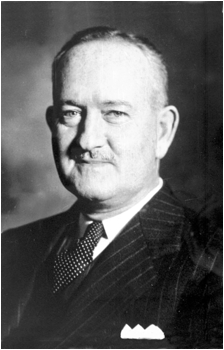 Doolin was a noted aviator in World War I, with one kill. He was gassed in the war, which cost him all his teeth. His hair also turned pure white, making him a striking-looking young man in his 20s.
Doolin was a noted aviator in World War I, with one kill. He was gassed in the war, which cost him all his teeth. His hair also turned pure white, making him a striking-looking young man in his 20s.Doolin was tapped to direct the California version of the Works Progress Administration with construction and funding responsibility for 32 airports in the state. Of course, one of his first projects was to give Mills Field its first paved runway.
The process of construction and improvement begun with Doolin in 1932 has continued unabated to the present day — and will continue far, far into the future. An airport intended to accommodate airplanes up to 25,000 pounds, SFO now handles aircraft weighing a million pounds and hosts more than 31 million passengers a year, and no doubt some day will be launching passengers into low orbit.
The airport's real political turning point came in 1931 when Century Pacific Airlines signed a tenancy agreement to make the field its base for hourly flights to and from Los Angeles. On the strength of that commitment, San Francisco supervisors renamed the field San Francisco Municipal Airport.
As was common at the time, Century Pacific did not last the year, but it was Doolin's good fortune to finally sign a tenant in 1933 that would last. United Airlines, the company that San Mateo’s Walter Varney had helped establish, committed to San Francisco on New Year's Day 1933 and has been there ever since.
BUSINESS MEETING
Pledge
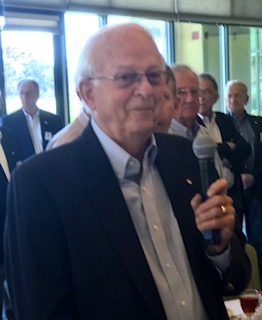 John Root played it straight, simply pointing out that this would be the last pledge before the debunking. Presumably, no allegiances will be honored at the debunking.
John Root played it straight, simply pointing out that this would be the last pledge before the debunking. Presumably, no allegiances will be honored at the debunking.
Thought
 June Lamb noted again that life is the result of choices, but cautioned that it’s possible to make bad ones. “The rules for humans are under law.” Balance is the key because “you pay the price if you don’t obey the law.”
June Lamb noted again that life is the result of choices, but cautioned that it’s possible to make bad ones. “The rules for humans are under law.” Balance is the key because “you pay the price if you don’t obey the law.”
Newscast
 Nicole Cherok, who has an adjustment for you, summoned St. Peter, a pope and a lawyer. Peter showed the pope to his new quarters in heaven, a one-bedroom, one-bath apartment. For the lawyer St. Peter reserved a five-bedroom mansion with marble staircases and an estate and gardens larger than Versailles. “What’s with me with a mansion and the pope with cramped quarters?” the lawyer asked St. Peter. “We get lots of popes here,” said the saint. “But you’re our first lawyer.”
Nicole Cherok, who has an adjustment for you, summoned St. Peter, a pope and a lawyer. Peter showed the pope to his new quarters in heaven, a one-bedroom, one-bath apartment. For the lawyer St. Peter reserved a five-bedroom mansion with marble staircases and an estate and gardens larger than Versailles. “What’s with me with a mansion and the pope with cramped quarters?” the lawyer asked St. Peter. “We get lots of popes here,” said the saint. “But you’re our first lawyer.”There was another one about Mr. Hoffstedter’s cardiac problem, a wonderful sex life gone bad as a result and a little upstairs/downstairs hanky-panky that may or may not have resulted in a fatality.
Sunshine
Mitch Williams reports that Bob Campbell, who suffered a stroke, and his daughter, hospitalized for surgery, are recovering and doing well.
Liz Mayta’s father is in the hospital and we wish him a speedy recovery.
Visiting Rotarians
Nanci Nishimura introduced Frances Zelinsky and Barbara Eisendel of San Bruno.
Guests
Dick Bennett introduced his guest from the National Center for Equine Facilitated Therapy; Laura Porter was squiring around son Andrew, a recent graduate of Baywood’s kindergarten class; Lynn Armenio introduced her grandson, fourth-grader Gavin.
Community Funding
Rachel Del Monte presented several of this year’s group of grant awards from our Community Funding program.
Honorees were Erica Horn and Juliana Fuerbringer of California Clubhouse, plus Clubhouse member Patrick; Susan Gerard and Eric Hanson of the Villages of San Mateo County and Catherine Evans of Lesley Senior Properties. Congratulations to the recipients and the committee for their labors.
Happy Birthday to our June Rotarians!
Rotary Day at AT&T Park
Thanks to Laura Porter of the Giants our contingent enjoyed Saturday’s contest between the Giants and the Padres and Brandon Crawford’s three-RBI effort which helped produce a 5-3 victory over the monks.
De-fining Moment
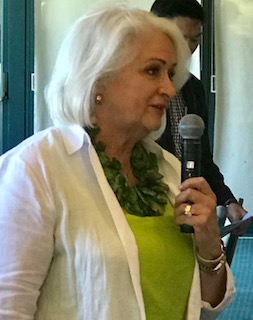 Nancy Stanton escaped a second President’s Club — apparently it takes presiding over 50 meetings to instill presidential compassion. Good on Nancy for establishing Diamond Certified status for Abbey Carpets.
Nancy Stanton escaped a second President’s Club — apparently it takes presiding over 50 meetings to instill presidential compassion. Good on Nancy for establishing Diamond Certified status for Abbey Carpets.